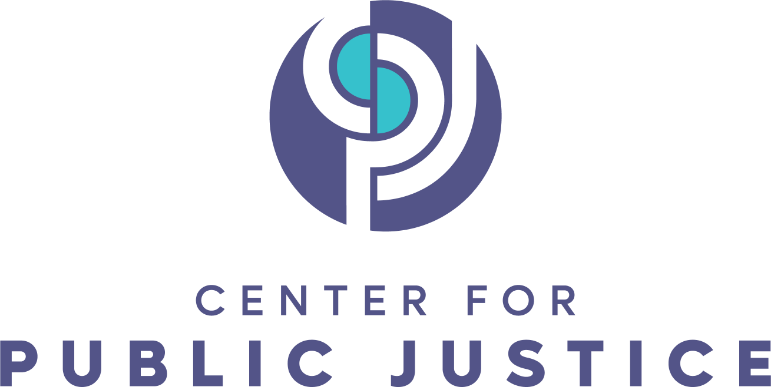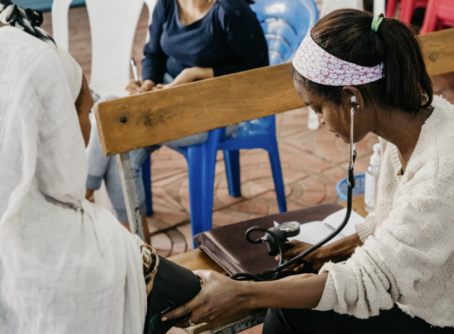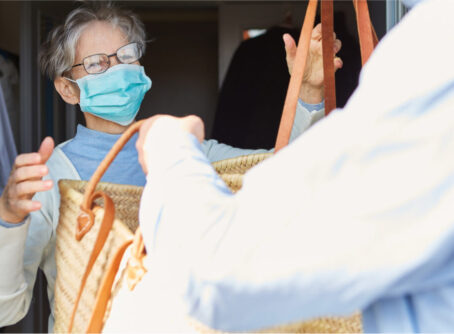
Each day at Washington Alternative Learning Center (WALC) in Chattanooga, Tennessee, students from the local school district proceed through metal detectors to their classrooms and open their school-issued laptops to begin a day’s worth of digital, self-paced learning.
“All learning [at WALC] is online. Distractions don’t exist because phones aren’t allowed and peer interaction is limited,” says former WALC teacher, Tiffany Wiltshire. The stringent rules in place at WALC reflect the demographic the school serves: WALC is a middle ground for juvenile offenders. It serves students who are suspended from traditional school but have not offended in a way that warrants a trip to juvenile detention. Educational services like WALC are necessary as a temporary learning option because justice-involved students have needs that cannot always be met by traditional schools. That said, the instruction justice-involved students receive while in juvenile detention or alternative school should still open doors to opportunities that steer them away from further system involvement. Executed properly, education in any school can reduce recidivism in youth because rigorous, engaging learning can also close doors to harmful behavior that leads to time in the justice system.
Juvenile Justice by the Numbers
Juvenile offenses have decreased dramatically nationwide since the 1990s, but concerns remain high with regards to recidivism rates and the systemic overrepresentation of youth of color, youth with disabilities and youth in poverty. Black and Hispanic students were incarcerated in 2019 at consistently higher rates than White students; up to 60% of justice-involved youth have learning disabilities that require special education services; and another study found that two-thirds of justice-involved youth had involvement with the child-welfare system. When looking at recidivism, youth with substance abuse issues and limited access to resources within the justice system are more likely to reoffend, as are students with below-average academic achievement — who are also more likely to enter the system in the first place.
If public education is to realize its full capacity to reduce recidivism, it must make learning a top priority for justice-involved youth.
According to youth.gov, academic achievement levels influence a child’s entry into and exit from the justice system — a fact that should not be ignored. Taken alongside the fact that only 16% of Black and 29% of Latino fourth graders read at proficient levels in 2022, and that reading proficiency for special education students continues to decline, the message should be clear: our education system is failing to meet the academic needs of overrepresented groups in the justice system, and this failure impairs our ability to restore young people to their communities. If public education is to realize its full capacity to reduce recidivism, it must make learning a top priority for justice-involved youth.
Learning While Justice-Involved
School settings vary for justice-involved youth. Depending on the offense, a student could be receiving educational services in a detention center, they could be attending alternative school, or they could be attending traditional school. Unfortunately, the instruction they receive from one environment to the next is far from equivalent — sometimes even when they return to traditional school.
Incarcerated students face the largest barriers: many have learning gaps, learning disabilities, behavioral issues and generally limited resources
Incarcerated students face the largest barriers: many have learning gaps, learning disabilities, behavioral issues and generally limited resources. These barriers often lead to a substandard education. According to research published by Columbia Southern University, students in residential detention are not taught rigorous content and special education services are severely lacking — a glaring concern given the number of learning-disabled students in the justice system. Alternative schools, like WALC, offer a marginally better education than detention centers. In this article, the term ‘alternative school’ refers to “last-chance” and “remedial” schools that serve students with justice involvement. WALC serves students for both remedial and last-chance purposes.
“Academically, it’s not rigorous because you can’t really teach. The learning is all individualized because some students get sent for a week, some for a month, some a full year,” says Wiltshire. In other words, there’s no telling who will be in your classroom. This makes standard lesson-planning near-impossible; so instead, students learn an online curriculum. They watch videos, read short texts and answer questions — a notable step up from incarcerated learning. Still, once their time at WALC has ended, they return to traditional school and cannot keep pace with standard instruction because autonomous online learning is not sufficiently challenging.
Some justice-involved students never leave the classroom. Even so, in my experience teaching these students, I’ve learned that their education can still suffer. They miss class for court or probation meetings, and since their after-school time is typically restricted, they miss out on sports and tutoring too. Students who have recently returned from alternative schools or incarceration face the steepest odds; they have the largest learning gaps and tend to misbehave because the instruction is more rigorous. Oftentimes, their behavior leads to additional suspensions, which lands them right back in the system, where the learning loss continues.
Identifying Need
Students in the justice system have significant educational needs that should be met by local government and communities alike. This may be true especially for male students, who are disproportionately represented in the juvenile justice system. Studies find that low academic achievement is predictive of recidivism for justice-involved boys. Alternative and residential schools seem to suffer most extensively from a need for greater rigor. The need for rigor across all schools becomes even more glaring when taken alongside data that shows Black and Latino students — who are overrepresented in the juvenile justice system — consistently lag behind peers in terms of academic achievement.
One specialized area of need for justice-involved students is in their transition back to traditional school. The transitional period for juveniles from one educational setting to another can set the tone for their educational progress. This need is somewhat paradoxical: on the one hand, they need to be in school as much as possible because of how much learning they have lost — court and probation obligations shouldn’t further inhibit their learning. On the other hand, they need extensive support as they return to standard classrooms so that they aren’t immediately removed — which might require a slower transition from the alternative environment to the traditional one. Wiltshire emphasized that “the alternative placement is so different from the traditional setting that students who have done a longer time period in an alternative setting should be phased back into school.”
Really, the need for mental health support stems from a greater need: resources for communities and families.
Mental health services are critical for students in the justice system. Not only are justice-involved students more likely to have mental health challenges, but so are Black and Latino students. John Bellear, a high school counselor in Hamilton County, Tennessee, believes strongly in supporting mental health because of its impact on learning: “Mental health is pretty important. A big part of a counselor’s job is to build resilience because most students — especially girls — will be diagnosed with depression prior to turning seventeen. It definitely impacts academic performance.” Bellear sees the need compounded in students who are justice-involved as well: “They’re hard to reach, mainly because they don’t often come to school. The boys are especially hard to reach.” Really, the need for mental health support stems from a greater need: resources for communities and families. Challenges at home —- whether occurring in the family unit or the surrounding community — are often the hidden cause of a student’s entry or re-entry into the justice system.
Public Justice and Education
In order for learning to become an effective mechanism for reducing recidivism, public schools and citizens need to tackle student needs collaboratively. Useful in guiding this collaboration are the Center for Public Justice’s principles for government and citizenship. First, school districts have a responsibility to promote the welfare of all students, which means equal education for those who are justice-involved. Even though family units bear the primary responsibility for nurturing children, schools can also support the welfare of families as they rear their kids. Citizens — on behalf of businesses, churches, or themselves — have an obligation in this matter too: they should partner with schools to support students who need financial, educational and therapeutic services. Only through the combined strength of all of society’s institutions can the needs of justice-involved students be adequately met.
Schools: A Community Command Center
Public schools are best positioned to coordinate support for justice-involved students for two reasons. Firstly, these schools bind communities together and create the trust necessary for development — especially when they serve primarily economically disadvantaged students. In my experience working in such a school, multiple generations of families in the community have attended; alumni own businesses and operate churches down the street and others work as teachers, administrators and staffers in the school itself. This means that those working to develop the community actually have a stake in that development. They’re supporting their children, the children of relatives and friends, and the same children who, if they avoid recidivating, will eventually bear responsibility for the community’s flourishing. Secondly, public schools are blended institutions; though they are formally governmental, they are located in a space between public and private. Government, nonprofits, businesses, houses of faith and other social institutions can come together at schools to an extent not possible elsewhere.
Education can reduce recidivism when it’s empowered by social institutions that desire to positively influence the lives of justice-involved youth.
Education can reduce recidivism when it’s empowered by social institutions that desire to positively influence the lives of justice-involved youth. There are five key ways that education can become better equipped to serve justice-involved youth.
School districts must effectively transition justice-involved youth back into the traditional classroom. Every secondary school should have a team of teachers, administrators and staff dedicated to students returning from incarceration or alternative school. Justice-involved students with extended absences from traditional school should be phased back into the classroom to limit behavioral issues that result in additional absences. All justice-involved students should receive additional academic support, and school districts should establish lines of communication with juvenile court systems to ensure that they do not miss out on necessary learning or enrichment.
Juvenile incarceration facilities and alternative schools for juvenile offenders must teach rigorous content. A rigorous education for justice-involved youth who are incarcerated or suspended is necessary to ensure an effective transition back to traditional school. A partnership of school districts and juvenile courts should establish long-term and short-term alternative placement schools to avoid logistical challenges that lead to monotonous, ineffective learning opportunities. School districts must empower teachers in these schools to teach content that is instructionally equivalent to the traditional environment.
Parents must invest in their children’s education. Families bear primary responsibility for raising children. As such, parents should be involved in their children’s academic lives. This includes attending parent-teacher conferences, school board meetings and school events. Parents should also seek information and resources available at schools when they need additional support. If their child becomes justice-involved, parents should advocate for their child’s continued education and should petition schools to support their student’s transition back to the classroom. Additionally, parents should encourage their children to participate in enriching after-school activities that increase the amount of time they are supervised by caring adults.
Communities should provide wraparound services to families and justice-involved youth. Nonprofits, businesses and houses of faith should invest financially in community schools through donations, scholarships and job opportunities for students and parents. Individuals must support efforts to adequately fund schools by using their own resources when possible, and especially by voting in local elections. Individuals who have experiences relevant to justice-involved youth should seek out mentoring opportunities that enrich social-emotional development.
Schools must make space for supporting justice-involved youth. Nonprofit employees, social workers, counselors, business owners, mentors, faith representatives and parents should be familiar faces to justice-involved youth. These students should not have to venture outside their schools to find resources that meet their academic, financial and therapeutic needs. When possible, community representatives should be given physical space within public schools. Social workers should have in-school food pantries. Counselors, mentors and faith representatives should have, when appropriate, dedicated time and space to meet with justice-involved students in school. Businesses should be invited to host job fairs. Parents should be regularly invited to school events and welcomed by teachers, administrators and staff.
If schools realize their capacity to uplift justice-involved youth — and their capacity to host institutions and individuals who do the same — youth recidivism can be reduced.
If schools realize their capacity to uplift justice-involved youth — and their capacity to host institutions and individuals who do the same — youth recidivism can be reduced. Importantly, schools cannot realize this capacity without involvement from other social institutions that can support youth as they enter and leave the justice system. The future is ripe with opportunity for communities that forge multi-institutional partnerships. In these communities, justice-involved youth can’t possibly reoffend — all their time is spent learning at school, socializing in extracurriculars and developing nurturing relationships with parents, teachers, coaches, counselors and mentors.
Caleb Crary is a high school English teacher in Chattanooga, Tennessee.





